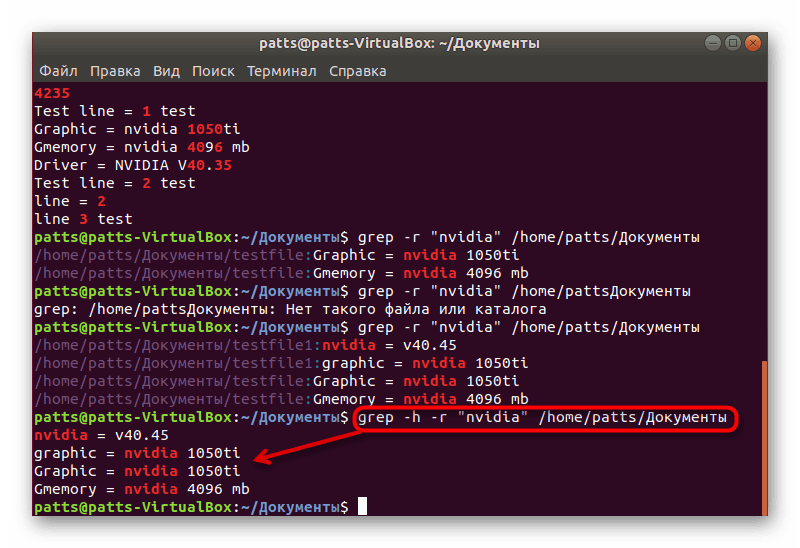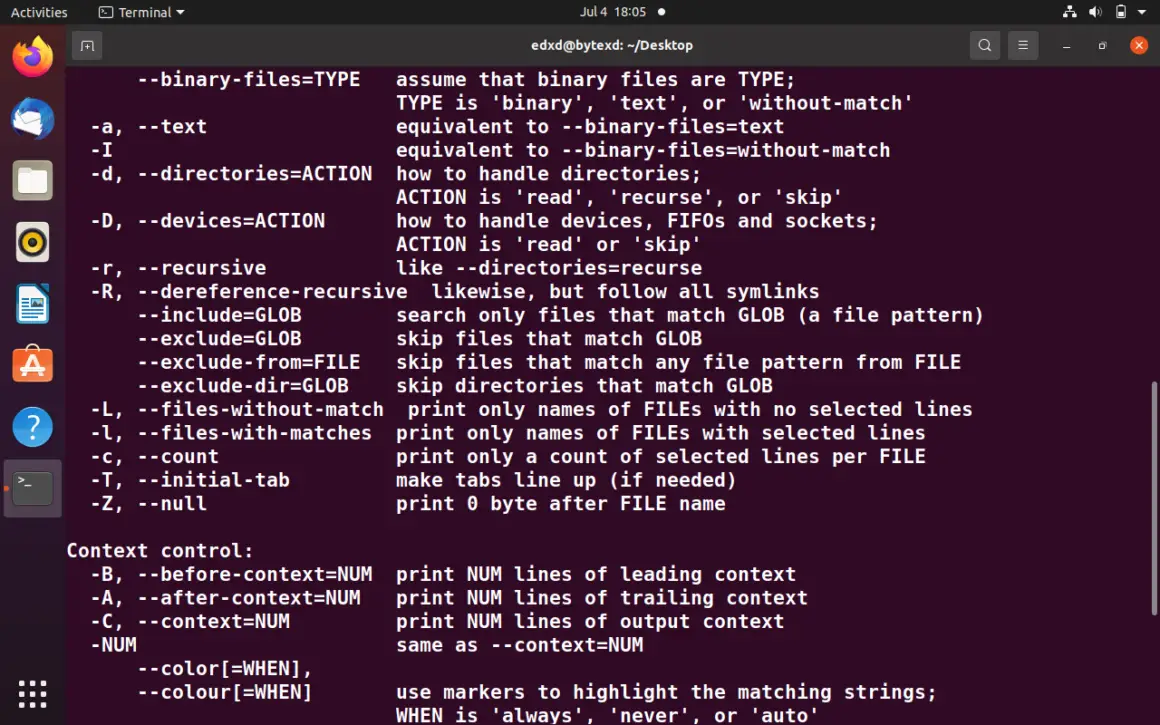
Perform an inverted search using the -v argument. Let’s look at a couple of interesting examples.ġ. Like many Linux commands there are many useful additions and variants for the grep command. The output will differ depending on your machine, but you should be met with a wall of text. This will also list internal USB devices, such as laptop webcams. Use lsusb to list all of the USB devices attached to your machine. Using pipes we send the output of a command to grep and use it to search for patterns / keywords.Ģ. The strongest use case for grep is when it is paired with another command. This will return results from all four of the test files in the directory. Add the argument -i to make grep case insensitive. Note also that these results don’t contain the result from test4 as in its basic form the grep command is case sensitive. Notice that the returned results include the result from test3 where the search string steve is contained within Steven. Adding an asterisk forces grep to search all files within the current directory. Also notice that grep returns the complete line of text that contains the searched string. Notice that, with multiple search areas, the returned results are tagged with each filename from which the result is found. We can simply add a list of files to the grep command for it to search. Search for the same string in multiple files. Notice that the word steve is simply returned in red to indicate it has been found in the file. The search criteria is case sensitive so ensure that you're searching correctly. Search test1 for the string steve using grep.

The grep command syntax is simply grep followed by any arguments, then the string we wish to search for and then finally the location in which to search.ġ. Let’s start using grep in its most basic form. For example when debugging an error in a log file. Searching a file for a specific string is extremely useful. Then press CTRL + X, then Y and Enter to save and exit. Note that in this file we are using a capital letter at the start of Steve. Finally edit test4 to complete our test environment. Similar to test1 we will add a list of names on separate lines but this list will include the name steven. this is a long line of test that contains the name steveħ.

In test2 we will add a single longer line of test containing the name steve. After editing in nano press control x to exit, press y to confirm the save and then press enter. Note that in test1 none of the names contain capitals. Edit test1 using nano to contain the following names on separate lines. Create 4 files, test1, test2, test3 and test4. Grep helps find patterns within files or the file system hierarchy, so it’s worthwhile to spend time getting familiar with its options and syntax.2. ngrep – grep applied to the network layer.pgrep – searches running processes and lists the process IDs which match the selection criteria to stdout.find – Find files or directories under the given directory tree recursively.To display lines with 3 w’s in a row (www), use: grep -E 'w' filename To display the lines starting with ‘er’, use: grep -e '^er' filename To return all lines which don’t match the pattern, use: grep -v 'warning' /var/log/nginx/error.log To display the line number of the matching pattern, use: grep -n 'pattern' filename To display the matching part of the pattern, use: grep -o 'pattern' filename To display x lines around the matching pattern, use: grep -C x 'pattern' filename To display x lines before the matching pattern, use: grep -B x 'pattern' filename To display x lines after matching pattern, use: grep -A x 'pattern' filename To display the filename which contains the pattern, use: grep -l 'pattern' /var/log/* Grep was originally developed for the Unix operating system but eventually made available for all Unix-like systems, such as Linux. To perform a case insensitive (ignore case) search, use: grep -i 'pattern' filename To search for a whole word, not a part of a word, use: grep -w 'word' /path/to/file To search directories recursively, use: grep -r 'hello' /path/to/dir

To search for an exact pattern, use: grep -F "pattern" /path/to/file To search all files in the current directory, use: grep pattern * To search for a pattern within a file, use: grep "pattern" /path/to/file The general syntax of the grep command is: grep grep was originally developed for the Unix operating system but eventually made available for all Unix-like systems, such as Linux.

When it finds a match in a line, grep then copies the line to standard output or whatever output you have selected using options. Grep ( global regular expression printer) searches through a file for a specific pattern of characters.


 0 kommentar(er)
0 kommentar(er)
